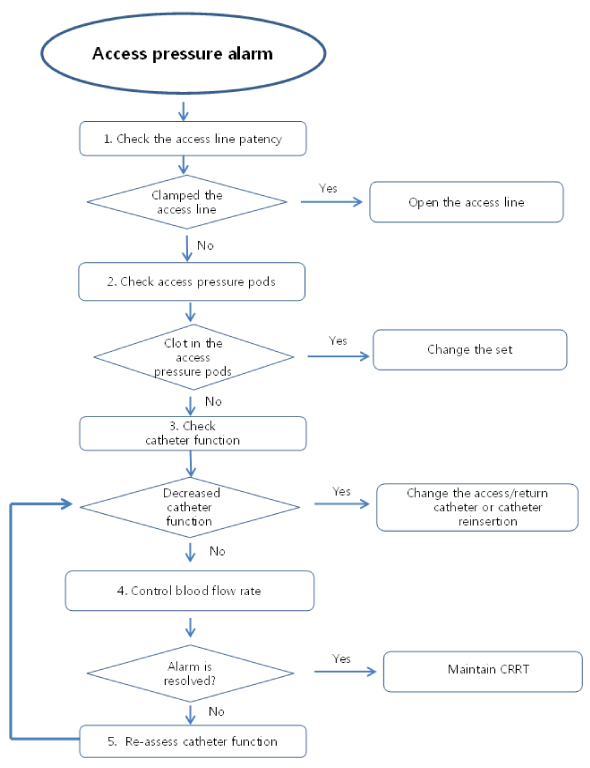1Department of Nursing, Samsung Medical Center, Korea.
2Department of Clinical Nursing Science, Samsung Medical Center · School of Medicine, Sungkyunkwan University, Korea.
Copyright © 2014 Korean Academy of Nursing Administration
This is an open access article distributed under the terms of the Creative Commons Attribution Non-Commercial License (http://creativecommons.org/licenses/by-nc/3.0/), which permits unrestricted non-commercial use, distribution, and reproduction in any medium, provided the original work is properly cited.
This article is a revision of the first author's master's thesis from Sungkyunkwan University.


General and CRRT-related Characteristics of Participants and Homogeneity of Two Groups (N=60)
*Statistically analyzed by Fisher's exact test; Exp.=Experimental group; Cont.=Control group; ICU=Intensive care unit; CRRT=Continuous renal replacement therapy.
Alarm Resolution Rate of the Participants (N=1345)
Exp.=Experimental group; Cont.=Control group
CRRT Nursing Competency of the Participants (N=60)
Exp.=Experimental group; Cont.=Control group.
Participants' Satisfaction with the Schematized Alarm-managing Manual (N=30)
CRRT=Continuous renal replacement therapy.
*Statistically analyzed by Fisher's exact test; Exp.=Experimental group; Cont.=Control group; ICU=Intensive care unit; CRRT=Continuous renal replacement therapy.
Exp.=Experimental group; Cont.=Control group
Exp.=Experimental group; Cont.=Control group.
CRRT=Continuous renal replacement therapy.